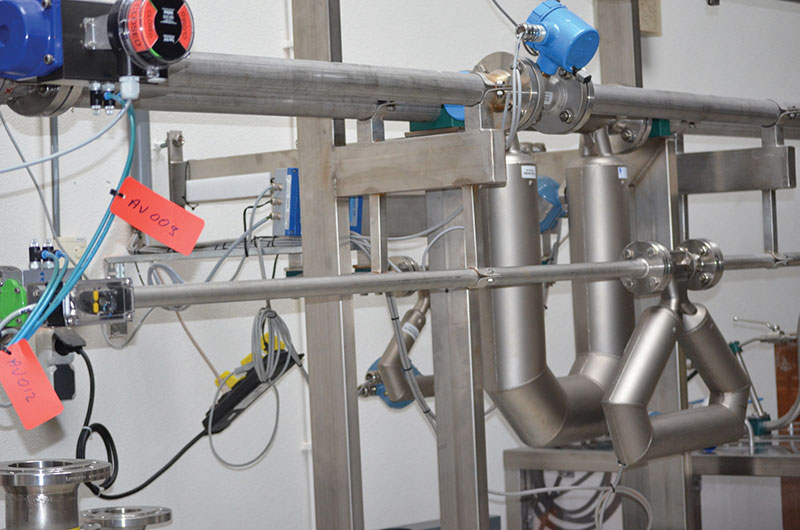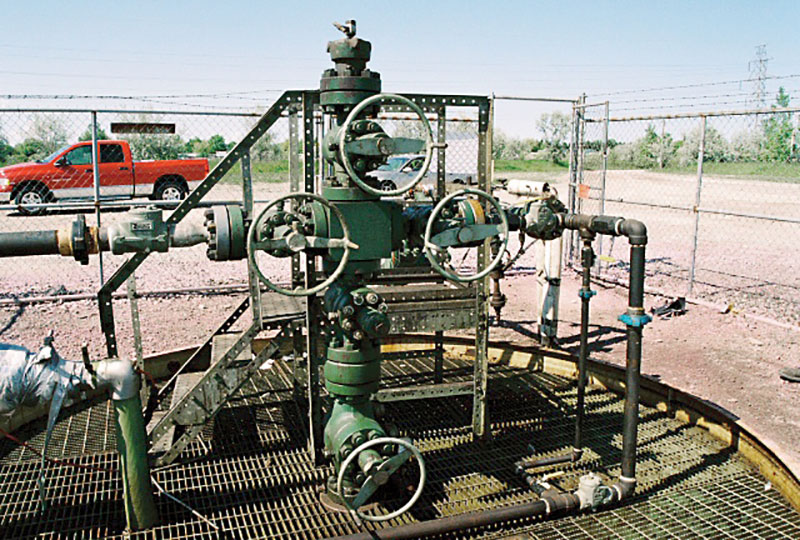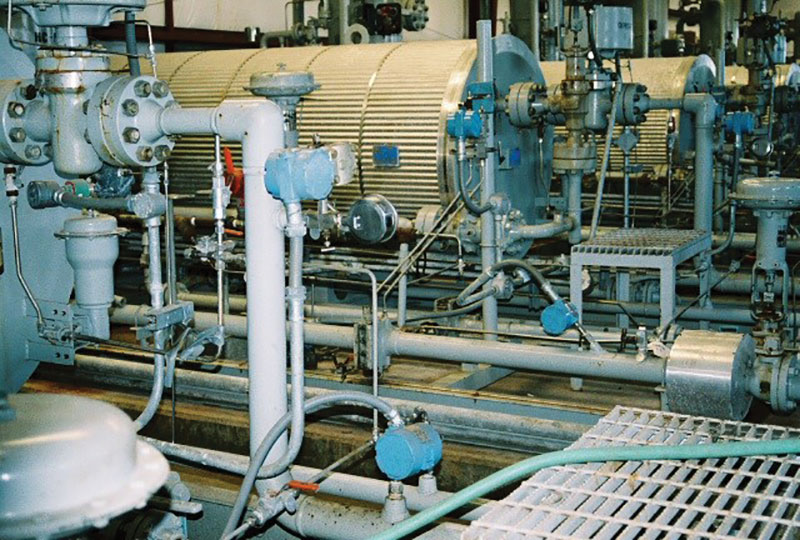July 2020, Vol. 247, No. 7
Metering and Measurement
Flexible Flow Meter Sector Positioning Itself for Better Times
By Jesse Yoder, President, Flow Research
The world’s search for energy has placed a new emphasis on natural gas. Natural gas burns cleaner than either coal or oil, and in many places, it is in more plentiful supply. While renewable energy is making significant strides in adoption, price is still a barrier to the widespread adoption of renewable technologies such as solar power, wind energy, geothermal, tidal power and others.
Natural gas is used to power trucks and other vehicles and is very widely used as a source of power in power plants, where they are displacing the use of coal as an energy source. It serves as a source of heat for homes and for industrial buildings. Natural gas is widely viewed as a bridge to renewables and will likely remain so for a number of years.
As a result, natural gas is much discussed in flow measurement because it plays such a critical role in supplying energy. Like air, natural gas is a mixture of gases. These include methane, ethane, butane, propane and other alkanes.
Each flow meter type has its own application strengths and weaknesses in measuring gas flow. As is the case in the broader flow meter market, new-technology flow meters, such as ultrasonic and Coriolis, are replacing the conventional technologies of differential-pressure (DP), turbine and positive displacement.
Some conventional flow meter suppliers are responding to this trend through innovation – with new, more durable materials, added electronics, and new product introductions that offer bi-directional flow, self-lubrication, and significantly reduced pressure drop.
These innovations are helping conventional flow meter suppliers hold onto their market shares and enabling them to continue to compete in a changing marketplace. Even though gas flow can be a difficult measurement to make, flow meter suppliers are continually identifying novel solutions for this task.
Coriolis
Coriolis flow meters have significant advantages for gas applications. Because they measure mass directly, based on the momentum of the fluid, they can do so without additional instrumentation such as temperature and pressure sensors and transmitters. This both saves on space and on the cost of buying these instruments.
Coriolis meters give a more accurate reading than is available from a DP or vortex multivariable flow meter. In addition, Coriolis meters provide a density reading. This can be useful in situations in which product is subject to varying densities, or where product is sold by weight. This capability also eliminates the need to purchase separate inline density meters.
Coriolis meters have an easier time measuring liquids than gases because liquids are denser than gases. However, one major limitation of Coriolis flow meters is in their line size. Coriolis flow meters become expensive and unwieldy in line sizes above four inches. However, a number of suppliers are now producing Coriolis flow meters in line sizes above six inches. Rheonik used to be the only supplier in this large size market.
Now Endress+Hauser, Emerson Micro Motion, Krohne, and Shanghai Yinuo of China are all producing large line size Coriolis meters. As a result of this influx of manufacturing capability in the large-line segment, Coriolis flow meters are beginning to gain wider acceptance in large line size applications. Even so, they cannot compete with ultrasonic and turbine meters for line sizes 20 inches and up.
Coriolis flow meters are also effective in measuring low flow gases and liquids. Line sizes go down as low as 1/16 inch. Some flow meters such as vortex meters have a difficult time with low flow rates because they are unable to generate the required vortices at extremely low flows. Some Coriolis suppliers such as Bronkhorst, Brooks Instrument, and Emerson Micro Motion have designed Coriolis meters for extremely low flow rates of both liquid and gas.
Some of these Coriolis meters are designed for semiconductor applications, and some for industrial applications. These low flow rate meters are used in the oil and gas industry for various applications.
Ultrasonic
Ultrasonic flow meters are widely used for gas flow measurement. Inline models send an ultrasonic signal from one side of the pipe to the other and then send a signal in the reverse direction. When the signal travels with the flow, it moves more quickly than when it travels against the flow. Ultrasonic flow meters measure the transit time of the signal in each direction, with the flow and against the flow.
A flow rate is proportional to the difference in these two “transit times.” Clamp-on models measure flow in a similar way, but the transducers are mounted outside the pipe. Though the accuracy of clamp-on models is typically not as high as that of the inline versions, their ability to measure flow without pipe penetration makes them valuable for check metering and temporary flow measurement.
Ultrasonic flow meters are one of three main types of flow meters used for custody-transfer of natural gas. In this area, they compete against differential-pressure and turbine flow meters. Ultrasonic flow meters used for custody transfer of natural gas must use multipath meters with at least two independent pairs of measuring transducers.
Some now have as many as 18 paths. Suppliers of multipath flow meters for gas flow measurement include Emerson Daniel, SICK, Honeywell Elster and Schlumberger. While DP flow meters received AGA approval for custody transfer applications before ultrasonic meters, ultrasonic meters have been making inroads into the DP flow meter installed base because of their reliability, accuracy, and because they do not have moving parts or cause pressure drop.
Vortex
Vortex flow meters are among the most versatile meters because they can measure gas, liquid, and steam with equal ease. They are widely used for steam flow measurement because they can tolerate the high temperatures and pressures associated with steam. Vortex meters have a bluff body, also called a shedder bar, that generates vortices in the flowstream.
The meter determines the frequency of the vortices by using a variety of technologies, including ultrasonic, piezoelectric, and capacitance to detect the frequency of the vortices. The flow meter’s electronics uses this value to compute flow rate.
Gas flow is often measured in mass units rather than volumetric units. Measuring mass flow requires that temperature and pressure be considered. The first multivariable vortex flow meter was introduced by Sierra Instruments (now a TASI Group company) in 1997. This vortex meter included an RTD temperature sensor and a pressure transducer. The temperature and pressure values were sent to the flow meter’s electronics, which combined them with volumetric flow rate to compute mass flow. Since this time, a number of other vortex suppliers have also introduced multivariable vortex meters.
Vortek Instruments has taken an innovative approach to vortex meters by combining its vortex meter with a cone meter. Cone meters were first invented by McCrometer and were called the V-Cone. Since that time, other companies, including Schlumberger Cameron and Emco Controls, have begun producing cone meters. Vortek’s VorCone meter includes a standalone vortex meter and a standalone cone meter. This provides both a vortex and a differential pressure reading.
By combining these two technologies in a single instrument, the VorCone can predict fluid density, volumetric flow rate, and mass flow rate without requiring the use of additional instruments to determine density. This can be valuable in measuring both gas flow and steam flow. The VorCone is part of a growing trend to create cross-technology flow meters. Another example is the Veris Accelabar by Armstrong International, which combines a flow nozzle with an averaging Pitot tube. This reduces straight run requirements.
Thermal
Thermal flow meters are used almost exclusively to measure gas flow. Thermal flow meters typically inject heat into the flowstream and then measure how quickly this heat dissipates. This value is proportional to mass flow. Two different technologies for thermal measurement are constant temperature and constant power.
Constant temperature meters have a heated sensor and another sensor that measures the gas temperature. The mass flow rate is proportional to the amount of power required to maintain a constant difference in temperature between the two sensors.
Constant power thermal meters also use a heated sensor and a temperature sensor that measures the temperature of the gas. The power to the heated sensor is kept constant. Mass flow rate is computed based on the difference in temperature between the heated sensor and the temperature of the gas flowstream. Both the constant power and constant temperature methods make use of the fact that higher velocity flows produce a cooling effect.
Thermal flow meters were developed in the mid-1970s by Drs. John Olin and Jerry Kurz. The two had worked together on anemometer research at TSI in Minnesota. The two moved together to Monterey, California to start Sierra Instruments. In 1977, the company split into Sierra Instruments and Kurz Instruments. The idea behind their original thermal flow meter was to develop a more rugged, industrialized version of the anemometer, which at that time was mainly used to measure air flow.
Another company that independently developed thermal flow meters around the same time as Sierra Instruments was Fluid Components International (FCI). All three companies are still in operation in California today. FCI has developed a hybrid thermal flow meter that uses both constant temperature and constant power technology in a single flow meter. FCI’s ST80 uses the constant temperature method for lower flows, then shifts automatically to the constant power method for higher flow rates.
This method is comparable to compound meters that incorporate positive displacement meters for low flow rates and turbine meters for high flow rates. Compound meters are used in apartment buildings that have very low flows overnight, but have periods of high flows, especially in the mornings and evenings.
One main application for thermal flow meters is measuring stack gas flows. In the early 1990s, EPA requirements created a need to measure sulfur dioxide (SO2), nitrous oxide (NOx), and other industrial pollutants being emitted from smokestacks. Due to the large size of these stacks, multiple measuring points were necessary for accurate measurement. Multipoint thermal flow meters were developed in response to this requirement, which was known as continuous emissions monitoring.
Beginning in 2008, a broader need to measure greenhouse gas emissions began generating added momentum in the thermal flow meter market. Applications include flare gas, biogas recovery, compressed air, boiler inlet, and other gas and air applications. Thermal flow meters are well suited for these applications because they are almost entirely gas, can involve large line sizes that can be handled by insertion meters, and because most do not require custody transfer accuracy.
Even though in the United States the Trump administration has been less favorable to environmental monitoring than the Obama administration, many regulations are part of the Clean Air Act and so this monitoring is continuing. Competing technologies to thermal meters are multipoint averaging Pitot tubes and ultrasonic flow meters. This is especially true for measuring flare and stack gases.
Conventional Technologies
Other types of flow meters for gas flow measurement include DP, positive displacement, and turbine flow meters. Though they are not described in detail here, these conventional meters still play an important role in gas flow measurement. DP flow meters are used in almost every phase of gas flow measurement, including custody transfer of natural gas.
Because they have been around for over 100 years, and have been studied extensively, they have a large installed base. Orifice plate flow meters were the first type of flow meter to gain approval by the American Gas Association (AGA) for use in custody transfer applications.
One disadvantage of these flow meters is that the orifice plate is subject to wear. This can be remedied by replacing the orifice plate. Some end-users have said that by replacing the orifice plate, they are getting a new meter. While this is not literally true, it is a testament to the longevity of the differential pressure transmitters that accompany them and that calculate the flow rate.
Diaphragm positive displacement meters still are widely used in the United States for commercial and utility gas flow measurement. These meters are often located outside of restaurants and other small businesses for measuring gas consumption. Many of them were manufactured by American Meter Company (AMCO), which was acquired by Elster. Elster in turn has been acquired by Honeywell. Diaphragm meters are also used by larger business establishments for measuring gas consumption, although in many cases the utility owns the meter. Rotary meters are replacing diaphragm meters for some applications.
Turbine meters are still widely used for a variety of gas flow measurement applications. They compete with DP flow meters and ultrasonic meters to measure custody transfer of natural gas. Like ultrasonic meters, turbine meters can easily handle large line sizes.
One disadvantage they have is that their rotors are moving parts and are subject to wear. Turbine meters are also subject to clogging, and their rotors can be knocked out of position. For this reason, turbine meters need to be recalibrated regularly (e.g., every six months) if they are making a critical measurement.
Considering Economics
Natural gas and oil prices tend to track together pretty closely. Crude oil prices started declining soon after the beginning of 2020, once awareness of COVID-19 began to be widespread. Saudi Arabia and Russia had a disagreement about oil supply reductions in early March, that reduced oil prices further.
By April, oil was selling in the $20 per barrel range. On April 12, led by OPEC, 23 countries agreed on a massive supply reduction that amounted to between 19 and 20 million barrels per day. These cuts began May 1. As of early June, conformance to the cuts has been good by OPEC countries, and oil prices have come back to the $40 per barrel range.
Flow meter companies we talk to say, “It’s too early to tell” how these economic conditions will impact their sales in 2020. But if past recessions are a guide, expect that sales will be negatively affected in 2020 for many companies that sell into the oil and gas sector. The reason is that some projects are being canceled and wells are being shut in due to plunging demand for oil and natural gas.
There is good reason to believe, however, that this downturn may be relatively short-lived, and that economic conditions may look significantly better in the fourth quarter. Whether this is true or not, it is probably better advice to flow meter companies to begin planning now for the upturn than to get completely absorbed in the downturn.
Whether it is fourth quarter or 2021, better times are ahead and those companies who plan now for the coming upturn will be better positioned for it than those who fail to look ahead.
Author: Jesse Yoder is president of Flow Research and has 33 years of experience writing about and analyzing process control and instrumentation markets, beginning as president and founder of Idea Network. He has received two patents for new flowmeter designs. Yoder is currently writing another two-volume set of books called Advances in Flow Measurement that is scheduled for publication in 2021. For further information, visit www.gasflows.com.








Comments